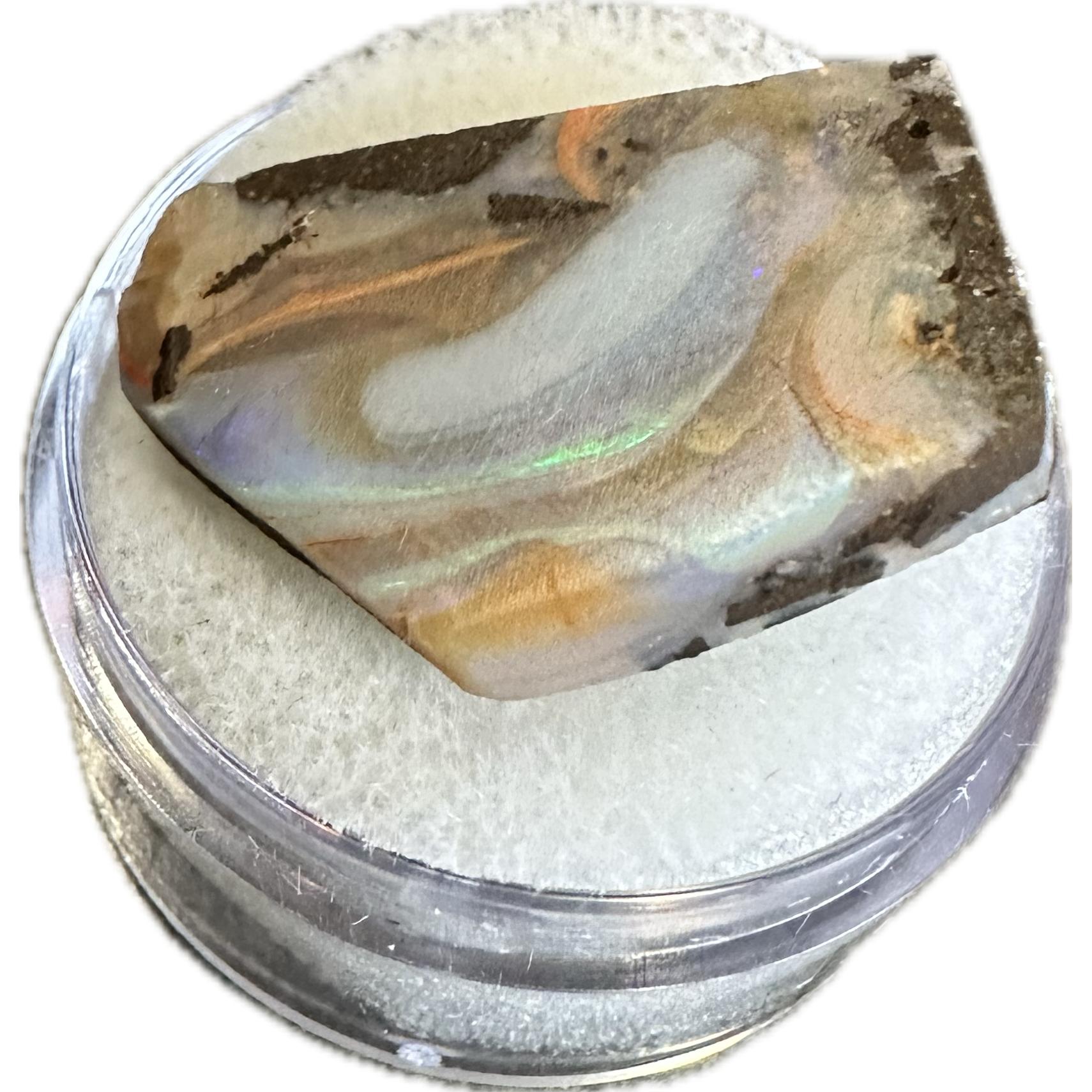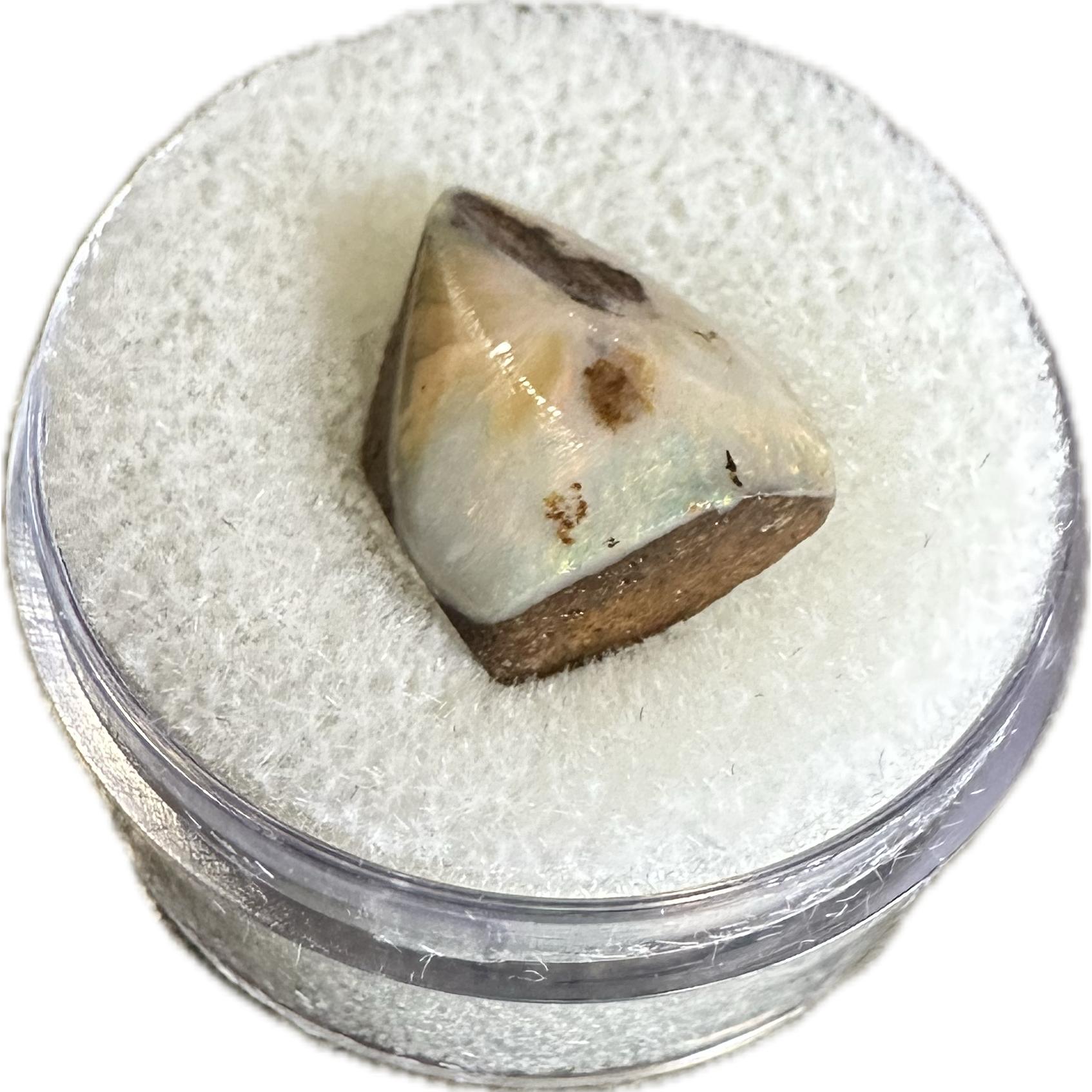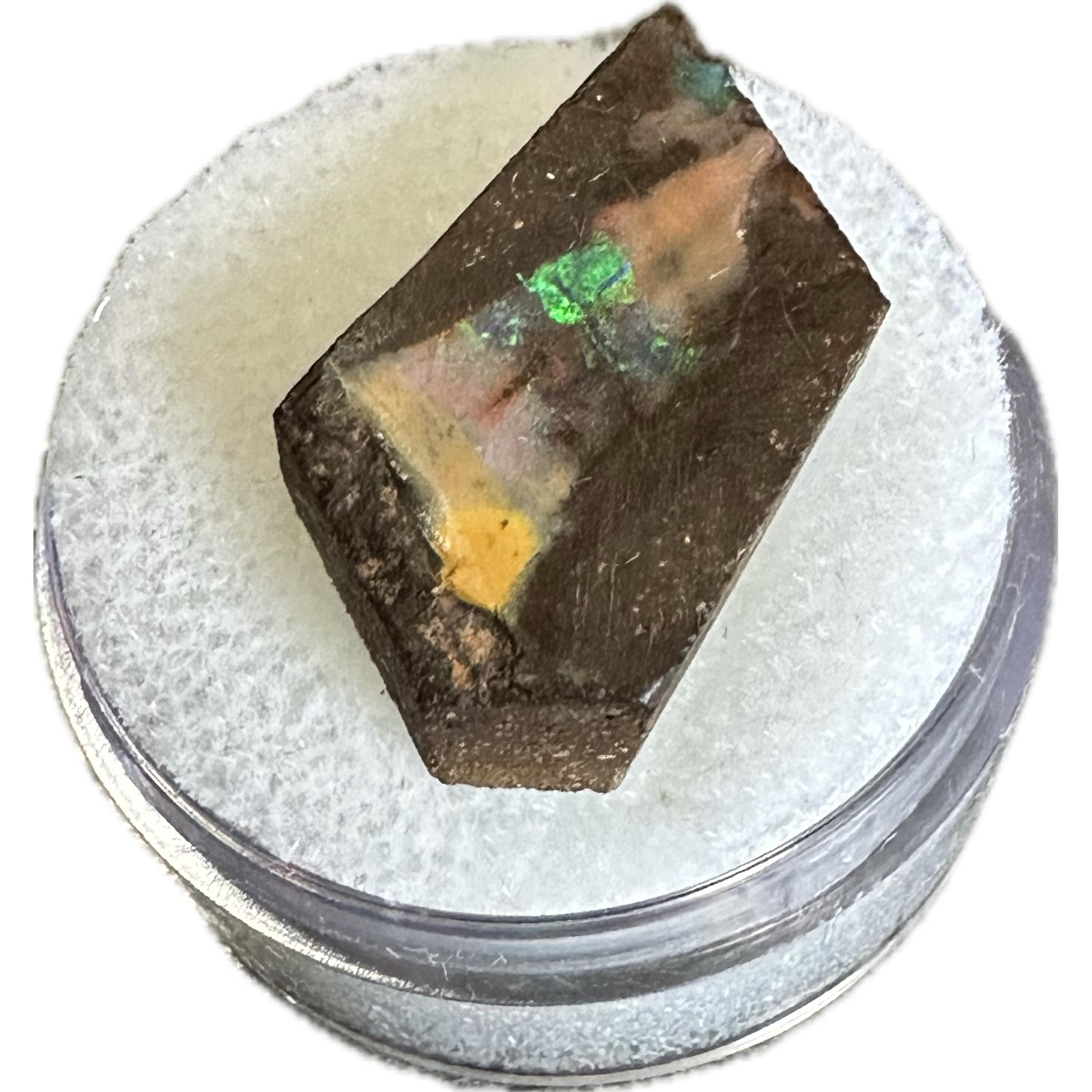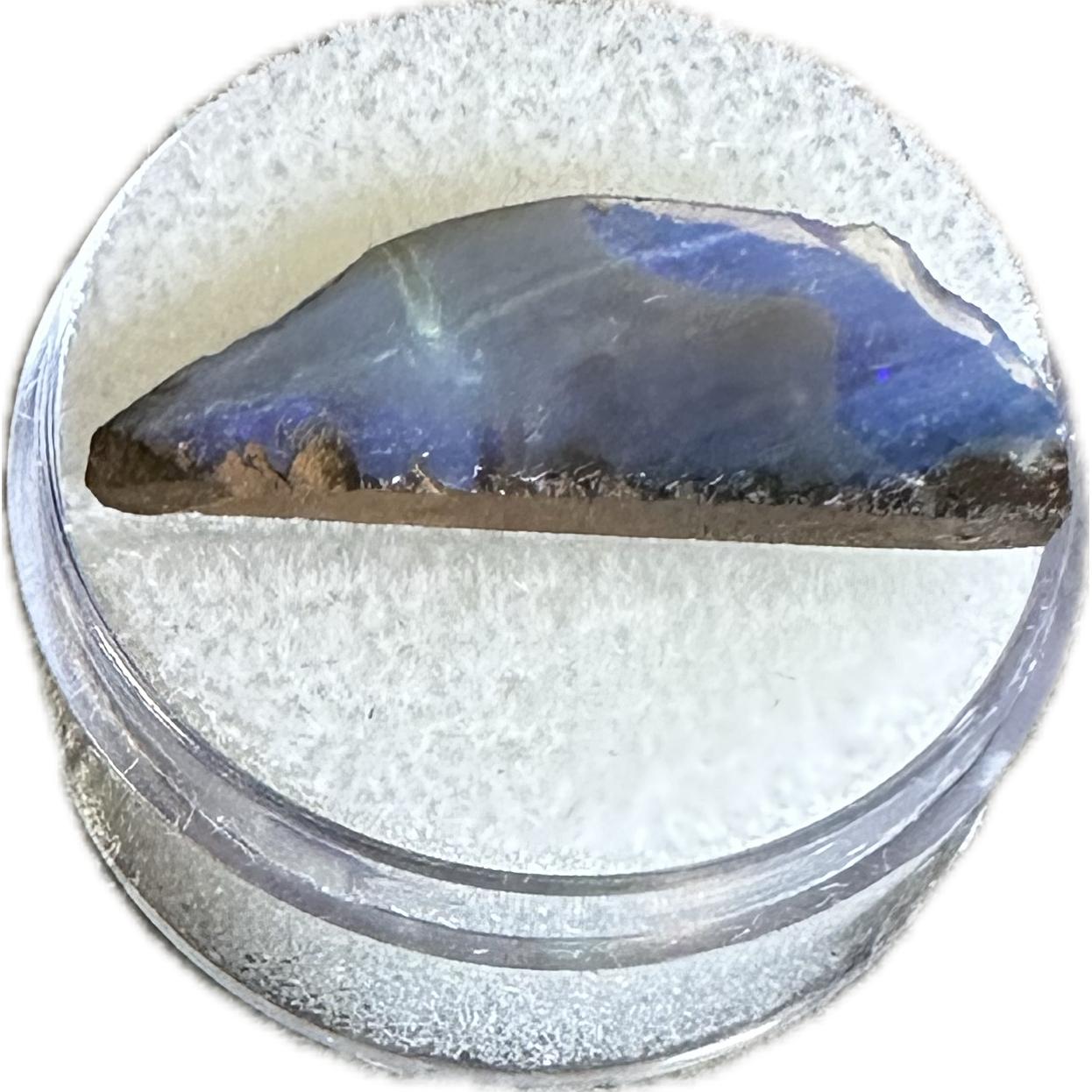Opalized Clam, Coober Pedy, Australia
Opalized fossils are mesmerizing relics of ancient life, blending the ethereal beauty of opal gemstones with the enduring mysteries of Earth’s geological past. These extraordinary specimens offer a captivating window into prehistoric ecosystems, preserving the delicate structures of long-extinct organisms in stunning detail. Opalized fossils form through a complex process that unfolds over millions of years, involving the interplay of geological forces and chemical transformations. Found in various locations around the world, these fossils have fascinated scientists, collectors, and enthusiasts alike, offering valuable insights into the evolution of life on our planet.
The formation of opalized fossils begins with the burial of organic material in sedimentary environments. Whether it’s the remains of ancient plants, animals, or other organic matter, the initial step in fossilization involves the rapid burial of the organic material before it can decompose or be scavenged by other organisms. In the case of opalized fossils, the organic material is typically replaced by opal, a form of hydrated silica that exhibits a unique play of colors known as iridescence.

Opalization occurs under specific geological conditions that are conducive to the formation and preservation of opal. One of the key factors is the presence of silica-rich groundwater, which permeates through the surrounding sediment and interacts with the buried organic material. Over time, the silica solution replaces the original organic material, molecule by molecule, preserving the structure of the fossilized organism while imbuing it with the vibrant hues of opal.
The process of opalization is gradual and can take millions of years to complete. As the silica solution infiltrates the fossilized material, it forms a gel-like substance that gradually solidifies into opal. The opalization process is influenced by various factors, including the composition of the surrounding sediment, the pH of the groundwater, and the temperature and pressure conditions underground.
Opalized fossils come in a variety of forms, ranging from plant remains and animal bones to shells and even entire organisms preserved within opalized matrices. One of the most famous examples of opalized fossils is the opalized dinosaur fossils found in Australia, particularly in the Lightning Ridge area of New South Wales. These fossils, which date back millions of years to the Cretaceous period, include partial skeletons and individual bones of dinosaurs such as the opalized dinosaur.
Opalized fossils are also found in marine sediments, where they provide valuable insights into ancient marine ecosystems. In regions such as Coober Pedy in South Australia, opalized shells and other marine organisms are common, offering clues about the diversity and composition of ancient marine communities. These fossils help scientists reconstruct past environments and understand how marine life has evolved over geological time scales.
Opalized fossils are prized not only for their scientific significance but also for their aesthetic beauty. The iridescent colors of opalized fossils range from shimmering blues and greens to fiery oranges and reds, making them highly sought after by collectors and jewelry enthusiasts. Opalized fossils are often cut and polished to reveal their intricate internal structures and vibrant colors, transforming them into unique pieces of natural art.
In addition to their beauty and scientific value, opalized fossils serve as important tools for understanding Earth’s geological history. By studying the distribution, composition, and formation of opalized fossils, scientists can gain insights into past climates, environments, and tectonic processes. Opalized fossils provide a tangible record of ancient life and landscapes, offering a glimpse into the dynamic forces that have shaped our planet over millions of years.
Prehistoric 101 (Learn about fossils, minerals, and meteorites)
What is an Opal?
The Opal: A Spectacular Display Of Nature’s Beauty?




















